The Martini Mk.22 Renault bodyshell
It is in perfect condition and complete (yes the rare rear view mirrors are in a bag). However, the few stickers already on the bodyshell show their age: no problem since I have a complete decal set. There are also several paint marks to remove from the bodyshell at the rear side, the driver deserves some care to make it look like it should and the whole engine needs a repaint.
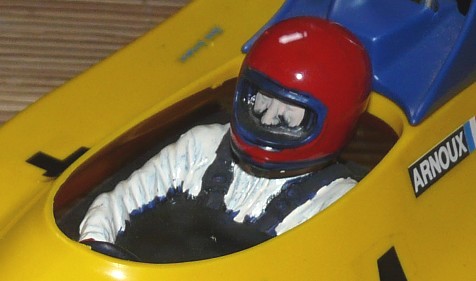
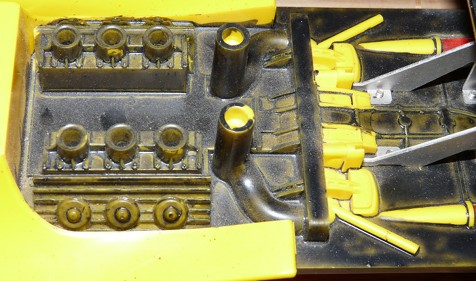
Now this is the result after several hours of painting and sticking decals:
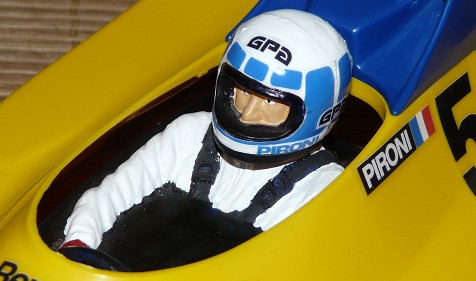
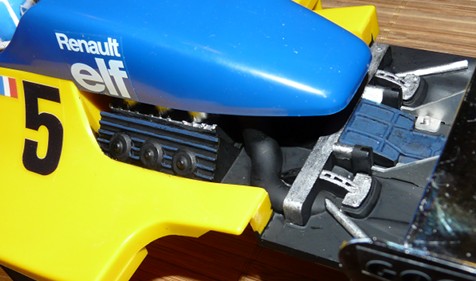
I think Didier Pironi's helmet livery look much better and is more interesting to do: this is why I didn't follow the usual boxart schema with René Arnoux's. This is when I discovered this model can be done in two very different liveries: the well-known yellow-blue boxart Martini's and another one entirely white. I only found one model with this alternate livery (this is nigeninja's from TamiyaClub).
My Renault Martini Mk.22

The Renault Martini Mk.22 alternate livery (© nigeninja)
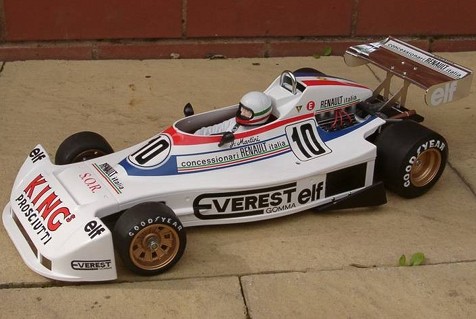
My model is now finished and ready to hit the track. The chassis is basic and without any specific technical innovation and the bodyshell is already molded with the boxart colors: this results in an easy model for a beginner. However, to give the model some realism, the engine painting is a pretty complicated exercise since it is not separated from the rest of the body: some places are pretty difficult to reach with the paint. As for the white "Everest" livery, it requires to sand the entire bodyshell, and to use a primer prior to painting: not everyone can achieve a result as perfect as nigeninja's. This probably explains why this livery is so rare. I always liked the yellow-blue Martini livery so I'm pretty happy my taste went for the easiest way ![]() .
.
First run
At last we had decent temperatures and weather: a great opportunity for this model to discover a track for the first time of its life since it never saw anything else but its box so far. Unfortunately, I could only make a few laps but this was mainly meant to be a test run: I will have future opportunities to check the battery capacity.
From the first wheel spins, the Renault Martini proves to be very fast: undoubtedly, the motor can easily handle the 980g overall weight of the car (almost 1/3rd less than my Tyrrell P34 Six Wheeler) but the slick tires can't handle so much power. The steering is pretty nervous too but precise in low speed corners: the straight line is pretty tricky though because the car is difficult to control and it requires a lot of concentration. Anyway, the most difficult part is to control the rear drivetrain since the motor power combined with the low grip tires won't forgive the slightest lack of concentration.
As for the look, I think the Renault Martini is absolutely beautiful once it stands on what is its natural environment: tarmac. Despite it requires a lot of concentration from the driver, seeing it running is stunning. But I have to describe the sound that photos can't render: compared to my Tyrrell P34 Six Wheeler roaring vintage song (aka "mechanical castanets"), the Renault Martini would sound almost like a real full-size race car. The chassis is almost silent (thanks plastic) so the gears can express themselves to their best.
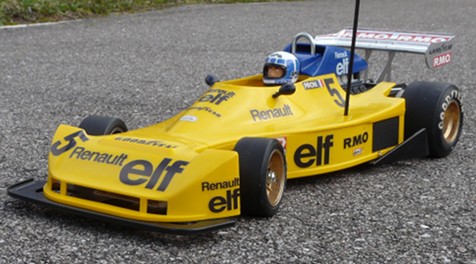
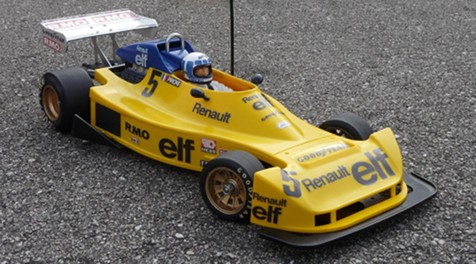
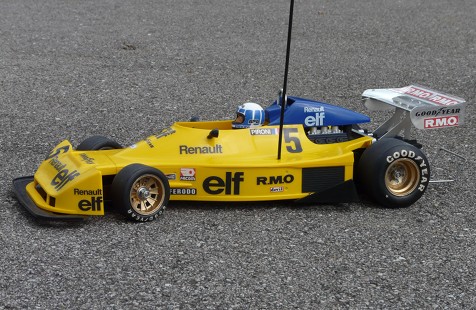
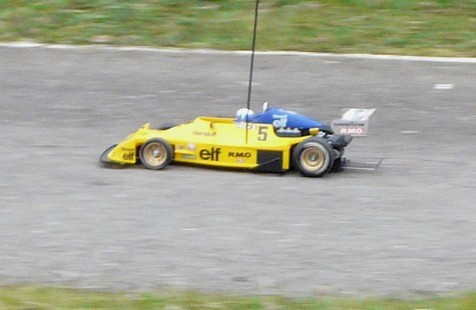
For the next run, I will try to make a video of this surprising circuit grand-ma.
Related articles:
- 58003 Tyrrell P34 Six Wheeler
- 58011 Ferrari 312T3
- 58053 Road Wizard F1
- 58069 Williams FW11B Honda F1
- 58084 Ferrari F189 Late Version - F101
- 58114 Footwork FA13 Mugen Honda - F102
- 58179 Williams Renault FW18 - F103RS
- 58288 Ferrari F2001 - F201




